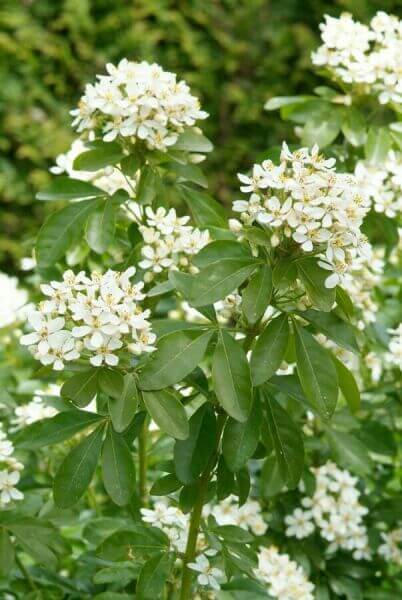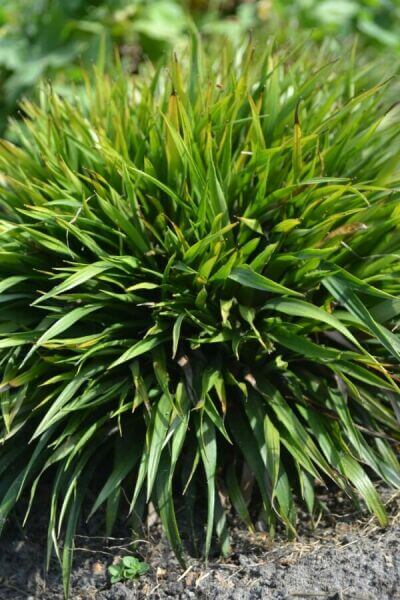Hedging Plants For Fences
Best Hedging Plants For Frosty Areas
Improve your garden's appeal with lush hedge ranges such as Yew (Taxus), Thuja, Laurel, Photinia, and Bamboo, celebrated for their structural integrity and ecological benefits.
Yew and Thuja supply evergreen coverage and winter strength, while Laurel offers fast development and broad, fragrant leaves.
Photinia includes seasonal appeal with its vibrant red foliage, and Bamboo provides a low-maintenance, tranquil ambiance.
These hedges enhance air quality, lower noise, and produce tranquil, private areas.
Appropriate planting, spacing, and maintenance guarantee energetic growth and environmental consistency.
Explore how these rich ranges can raise your garden's beauty and wellness.
Secret Takeaways
Change Your Garden With Lush Hedge Varieties
- Select Yew for its dense, evergreen growth and exceptional durability.
- Opt for Laurel for its fast development and broad leaves, ensuring quick personal privacy.
- Select Photinia for its lively seasonal foliage, which turns a striking dark red.
- Make use of Bamboo for a low-maintenance, winter-hardy hedge with aesthetic appeal.
- Area plants 2-3 per meter and prune frequently for optimal growth and health.
Popular Hedge Plants
When transforming a garden with rich hedge ranges, it's vital to think about popular hedge plants such as Yew, Thuja, Laurel, and Photinia due to their unique characteristics and advantages.
Yew (Taxus) is extremely respected for its durability and thick, green development, making it a prime option for enduring landscapes.
Thuja is noted for its evergreen foliage and robust winter resilience.
Photinia adds seasonal vibrancy with red leaves that darken over time, creating dynamic visual appeal.
Laurel offers rapid growth and fragrant, broad leaves, ideal for fast personal privacy.
Furthermore, Bamboo is an outstanding option for atmosphere, using a low-maintenance, winter-hardy choice that improves the garden's aesthetic with its stylish, swaying walking sticks.
These selections cater to a range of horticultural needs and preferences.
Advantages of Garden Hedges
Garden hedges provide a wide variety of advantages, making them an important addition to any landscape. These natural barriers are cost-efficient to execute and provide significant wind defense, improving air flow and contributing to sound reduction. The thick foliage of hedges like Thuja and Beech ensures personal privacy by blocking exposure, creating a tranquil and secluded environment.
Hedges likewise play a vital function in microclimate regulation, supplying a stable environment that cultivates plant growth and decreases temperature variations. Their intricate leaf structures filter pollutants, enhancing air quality and adding to a healthier garden environment.
Moreover, hedges master sound reduction, soaking up and deflecting sound waves to lower ambient noise levels. This double performance of providing both acoustic and visual privacy improves the general harmony and aesthetic appeal of any garden.
Planting and Maintenance Tips
For an effective hedge, precise preparation of the planting location is crucial. Ensure the soil has appropriate pH and drainage to support strong root advancement.
Area the plants properly for the chosen species. Water the hedge frequently during its initial growth phase, adjusting as needed with seasonal changes.
Implement a systematic insect control and disease avoidance technique, utilizing natural or chemical treatments when necessary. Regularly inspect for aphids, termites, and fungal infections.
Apply mulch to keep wetness and reduce weeds. Seasonal pruning promotes dense growth and air circulation, important for plant health.
Following these guidelines will help you cultivate a dynamic, properly maintained hedge that boosts the appeal of your garden.
Spacing and Cutting Guidelines
Spacing and Trimming Standards
Appropriate spacing and trimming are crucial for cultivating healthy, visually appealing hedges. Appropriate spacing guarantees each plant receives sufficient nutrients, light, and air flow.
Follow these standards for optimal hedge upkeep:
- Spacing: Position hedge plants 2-3 plants per meter to motivate robust growth.
- Pruning Techniques: Routine pruning is vital for maintaining wanted hedge height and shape. Trim brand-new development in summer and cut down older wood throughout winter season.
- Seasonal Care: Adjust cutting methods and schedules according to seasonal requirements to guarantee plant health.
- Hedge Height: Regularly screen and trim to preserve the preferred hedge height and achieve consistent visual appeals.
Sticking to these actions will ensure your hedge grows, enhancing both the appeal and performance of your garden.
Choosing the Right Hedge
Picking the Right Hedge
Selecting the suitable hedge includes assessing aspects such as fully grown height, foliage density, and ecological durability. Effective hedge plant selection requires understanding each species' growth characteristics and site-specific versatility.
For instance, Yew (Taxus) provides exceptional durability and dense growth, while Thuja is notable for its winter strength. In addition, considering maintenance requirements is important; fast-growing types like Laurel or Privet need routine cutting, whereas low-maintenance choices like Bamboo or Ivy might be more effective for those looking for very little maintenance.
Environmental factors such as soil type, light accessibility, and moisture conditions ought to likewise assist the choice process. This mindful approach ensures the picked hedges will prosper, supplying both visual and functional benefits to the garden landscape.
Shipment and Planting Guidance
To guarantee your hedge plants grow, they should be delivered by specialized carriers and planted quickly upon arrival.
Follow these vital actions for successful planting:
- Soil Preparation: Enhance the soil with natural matter to enhance drainage and nutrient content.
- Planting Depth: Produce a trench two times the width and equivalent to the depth of the root ball.
- Watering Techniques: Water thoroughly after planting, keeping the soil consistently wet but not filled.
- Mulching: Use a layer of mulch to maintain moisture and suppress weeds.
Customer Support and Service
Offered the crucial role of timely assistance in horticultural pursuits, our client support group is readily available 6 days a week through telephone, email, and social networks to use expert recommendations and quickly attend to any issues. Their devotion to fast action times makes sure consumer satisfaction by resolving inquiries associated with plant health, ideal planting approaches, and maintenance schedules.

Communication Technique
Six days a week
Within 24 hours
This comprehensive support system, enhanced by a stellar 9.3/ 10 customer rating, highlights our commitment to boosting the gardening experience for every client.
Frequently Asked Questions
For How Long Does It Consider Hedge Plants to Establish?
Hedge plants generally need one to three years to end up being completely developed, with the exact period differing by species and growing conditions.
Effective care during this crucial period is important for robust development. Constant watering, watchful weed control, and suitable fertilizer application are pivotal in promoting strong root advancement.
For instance, fast-growing species like Laurel may establish faster, while slower-growing varieties such as Yew may take longer. Diligent maintenance speeds up the facility process, resulting in dense and healthy hedges.
What Are the Best Hedge Plants for Personal Privacy?
The concern of the very best hedge plants for privacy involves evaluating evergreen and deciduous alternatives.
Evergreen hedges like Thuja, Laurel, and Cypress provide year-round protection, making sure continuous privacy.
On the other hand, deciduous hedges such as Beech provide seasonal privacy, shedding leaves in cooler months.
Secret maintenance tips for personal privacy hedges consist of regular cutting, fertilizing Additional hints in spring, and correct spacing-- usually 2 to 3 plants per meter.
Additionally, consistent watering and persistent weed removal are important for promoting healthy, dense development.
Can Hedge Plants Draw In Wildlife to My Garden?
Yes, hedge plants can attract wildlife to your garden by supplying important advantages like shelter, food, and nesting sites, thereby improving local biodiversity. Yew, holly, and laurel are outstanding for bring in birds, while ivy supports a variety of bugs.
However, it is necessary to note that there are some downsides, such as increased maintenance to handle pests and routine maintenance. Carefully picking and maintaining hedge ranges can assist balance these drawbacks and advantages, eventually fostering a dynamic and sustainable environment in your garden.
Are There Any Flowering Hedge Plants Available?
Yes, there are flowering hedge plants readily available that can enhance the beauty of your garden.
For instance, Elaeagnus, likewise known as Olive Willow, produces fragrant white flowers in the fall, adding a touch of sophistication.
Photinia, another popular option, showcases vibrant red leaves that develop into an abundant green, developing a vibrant visual effect throughout the seasons.
To ensure these plants prosper, it's vital to practice correct pruning techniques and seasonal maintenance, such as trimming new growth in the summertime and cutting down in the winter season.
These procedures will assist keep the health and aesthetic appeal of your flowering hedges.
How Do I Prevent Pests in My Hedge Plants?
To prevent insects in hedge plants, utilize natural insect control techniques and preserve appropriate hedge care. Present helpful pests like ladybugs, which prey on harmful pests, to create a balanced ecosystem.
Regularly inspect your hedges for signs of problem and quickly remove any affected parts to avoid the spread. Make sure the health of your hedges by using well balanced fertilizers and offering sufficient water.
Make use of mulching to maintain soil wetness and appropriate spacing to decrease plant stress and promote robust development. These practices jointly help in reducing pest concerns and keeping a healthy hedge.
Conclusion
In essence, selecting the right hedge varieties such as Yew, Thuja, and Laurel can change any garden into a relaxing haven. These plants provide year-round plant, improve aesthetic appeal, and deal useful advantages like sound reduction and wind defense.
Appropriate planting strategies, precise spacing, consistent watering, and seasonal cutting are important for ideal growth.
Dependable delivery services and professional consumer support make sure a smooth experience from purchase to planting, making it simpler than ever to elevate your outdoor area.
Garden hedges offer a wide variety of benefits, making them an important addition to any landscape. These natural barriers are economical to implement and supply considerable wind protection, boosting air circulation and contributing to noise decrease. The dense foliage of hedges like Thuja and Beech makes sure privacy by blocking visibility, producing a secluded and peaceful environment.

Pruning Techniques: Regular pruning is necessary for keeping preferred hedge height and shape. Trim brand-new growth in summer and cut back older wood throughout winter.